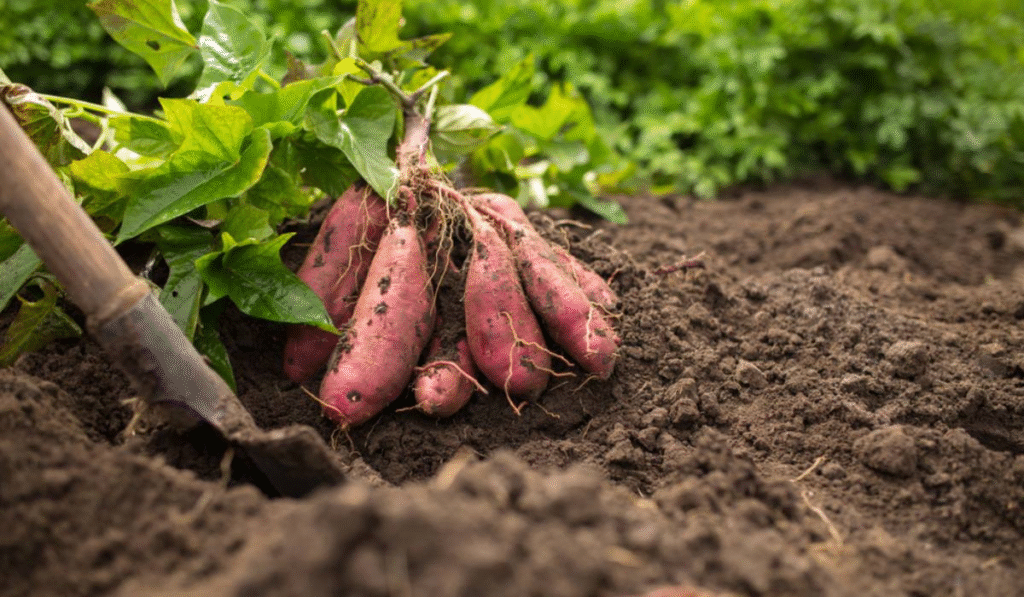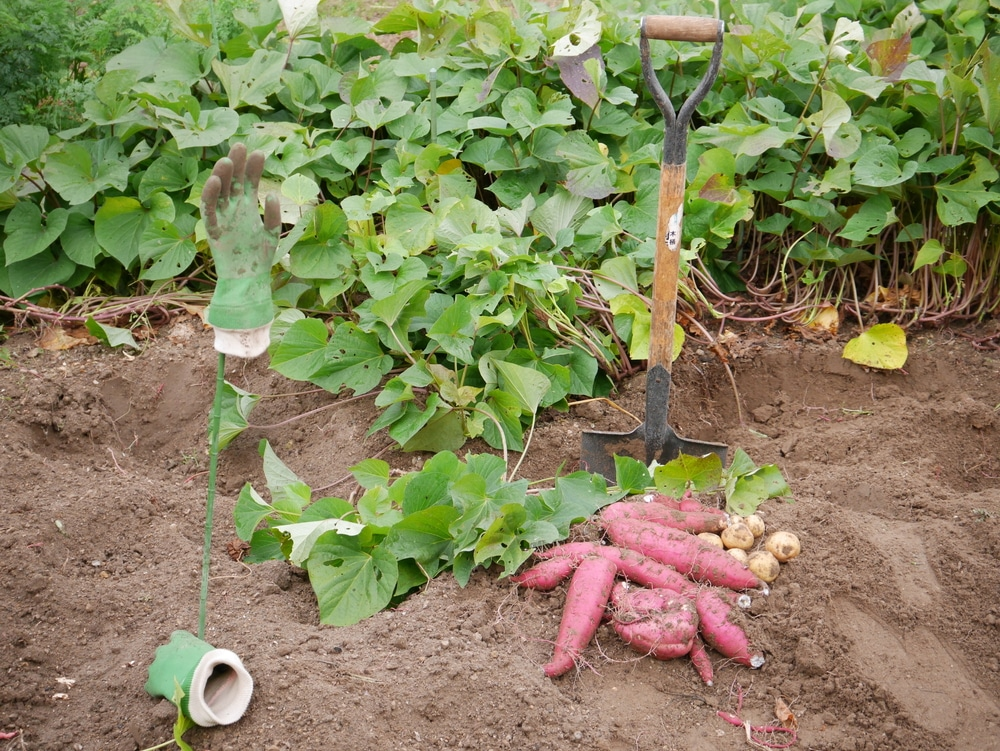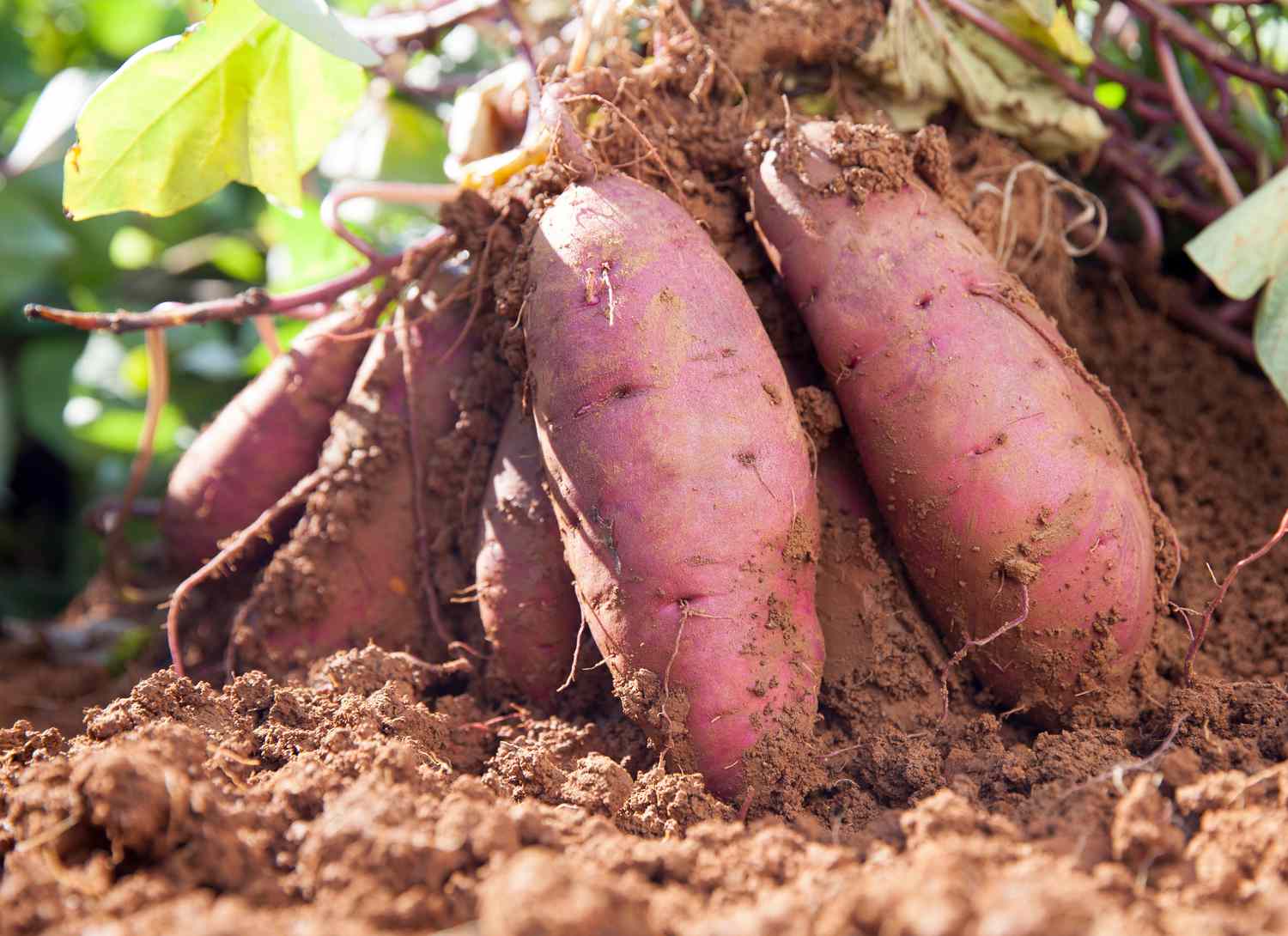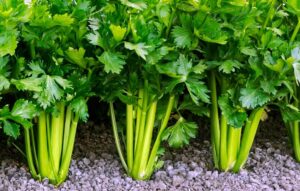How to Grow and Use Sweet Potatoes: A Complete Guide
Sweet potatoes (Ipomoea batatas) are versatile, nutritious vegetables that you can easily grow at home, whether in your garden, in containers, or even indoors. Unlike regular potatoes, sweet potatoes are grown from slips (sprouts) rather than seed potatoes. This comprehensive guide will walk you through the process of growing sweet potatoes in various settings and how to harvest and use them in your kitchen.
Understanding Sweet Potatoes
Sweet potatoes are warm-weather crops native to tropical regions of the Americas. They’re different from yams, though the terms are often used interchangeably in the US. True yams (Dioscorea species) are rarely found in US markets, while what Americans call “yams” are typically just orange-fleshed sweet potato varieties.
According to the USDA Agricultural Research Service, sweet potatoes are rich in vitamin A, vitamin C, potassium, and dietary fiber, making them a nutritious addition to your diet. Source: USDA National Agricultural Library
Starting Sweet Potato Slips
Unlike many vegetables, sweet potatoes aren’t typically grown from seeds. Instead, they grow from sprouts called “slips” that emerge from mature sweet potatoes. Here’s how you can create your own slips:
- Select a healthy sweet potato: Choose an organic, unblemished sweet potato from your grocery store or farmers’ market.
- Create sprouts: Place the sweet potato halfway in water using toothpicks to suspend it. The submerged half will grow roots while the top half will produce sprouts.
- Wait for growth: Keep in a warm spot and change the water every few days. In 2-3 weeks, you’ll see roots below and sprouts above.
- Harvest the slips: When sprouts reach 4-6 inches, twist them off the potato. You can place these directly in water to root or plant them immediately.
Planting Sweet Potatoes Outdoors
Sweet potatoes thrive in warm soil and full sun. The optimal growing conditions include soil temperatures above 65°F (18°C).
When to Plant
According to the USDA Extension Service, sweet potatoes should be planted after all danger of frost has passed and soil temperatures have reached at least 65°F. In most parts of the US, this means mid-spring to early summer. Source: USDA Cooperative Extension
Garden Bed Preparation
- Choose the location: Select a spot with at least 8 hours of direct sunlight.
- Prepare the soil: Sweet potatoes prefer well-draining, sandy loam soil with a pH between 5.8 and 6.2.
- Create raised beds: Elevate the soil into mounds or rows 8-12 inches high to provide drainage and room for tuber development.
- Add compost: Work in aged compost to provide nutrients without excess nitrogen, which promotes vine growth at the expense of tubers.
Planting Process
- Space slips 12-18 inches apart in rows that are 3-4 feet apart.
- Plant deep enough that at least half the slip is underground with 2-3 nodes buried.
- Water thoroughly after planting and keep soil consistently moist until established.
- Mulch around plants to suppress weeds and maintain soil moisture.

Growing Sweet Potatoes in Containers
If you have limited space or poor soil conditions, container growing is an excellent option.
Container Selection and Setup
- Choose large containers: Select containers at least 18-24 inches in diameter and 12-15 inches deep.
- Ensure drainage: Make sure your containers have adequate drainage holes.
- Use quality potting mix: Fill with a lightweight, well-draining potting mix enriched with compost.
Planting in Containers
- Plant 2-3 slips per large container, spacing them evenly.
- Position near a trellis if you want to train the vines upward to save space.
- Place in full sun: Ensure your containers receive at least 6-8 hours of sunlight daily.
- Water regularly: Container plants dry out faster than garden plants.
Growing Sweet Potatoes Indoors
Yes, you can grow sweet potatoes indoors! While you may not harvest massive quantities, it’s entirely possible to grow sweet potatoes on a sunny windowsill or under grow lights.
Indoor Growing Requirements
- Light: Sweet potatoes need at least 6 hours of direct sunlight daily. A south-facing window is ideal, or supplement with grow lights.
- Temperature: Maintain indoor temperatures between 65-85°F (18-29°C).
- Humidity: Sweet potatoes enjoy higher humidity, so consider misting occasionally.
Indoor Planting Process
- Choose a deep container with drainage holes.
- Fill with potting mix designed for vegetables.
- Plant slips as you would outdoors.
- Water when the top inch of soil feels dry.
- Fertilize monthly with a balanced organic fertilizer.
Sweet Potato Variety Selection
Different varieties have different characteristics, flavors, and storage capabilities. Here’s a comparison table of popular varieties:
| Variety | Flesh Color | Skin Color | Days to Maturity | Special Characteristics | Best Uses |
|---|---|---|---|---|---|
| Beauregard | Orange | Reddish-purple | 90-100 | Disease resistant, high-yielding | Baking, mashing, fries |
| Jewel | Orange | Copper | 100-110 | Stores well, consistent shape | All-purpose, great for roasting |
| O’Henry | White/Cream | Tan | 90-100 | Drier texture, sweet flavor | Fries, chips, roasting |
| Purple | Purple | Purple | 100-120 | High in antioxidants | Roasting, salads, colorful dishes |
| Georgia Jet | Deep orange | Red | 80-90 | Fast-maturing, good for northern regions | Baking, soups, casseroles |
| Centennial | Orange | Orange-red | 90-100 | Good disease resistance | Baking, casseroles |
Caring for Growing Sweet Potato Plants
Watering
- Initial establishment: Keep soil consistently moist for the first week after planting.
- Regular growth: Water deeply once a week, providing 1-1.5 inches of water.
- Reduce before harvest: Decrease watering 3-4 weeks before harvest to prevent splitting.
Fertilization
Sweet potatoes don’t require heavy fertilization. Too much nitrogen promotes excessive vine growth at the expense of tuber development.
- At planting: Use a balanced, slow-release organic fertilizer.
- Mid-season: Apply a light application of potassium-rich fertilizer to promote tuber development.

Pest and Disease Management
According to the USDA Plant Database, common sweet potato pests include sweet potato weevils, wireworms, and flea beetles. Source: USDA Natural Resources Conservation Service
- Crop rotation: Don’t plant sweet potatoes in the same location year after year.
- Physical barriers: Use row covers early in the season to prevent insect damage.
- Natural predators: Encourage beneficial insects like ladybugs and lacewings.
- Disease prevention: Plant disease-resistant varieties and avoid overhead watering.
Harvesting Your Sweet Potatoes
Patience is key when growing sweet potatoes—most varieties require 90-120 days to mature.
When to Harvest
- Check maturity: Gently dig around the plant to see if tubers have reached desired size.
- Watch for signs: Leaves may start to yellow, indicating the plant is redirecting energy to the tubers.
- Beat the frost: In northern regions, harvest before the first frost damages the plants.
Harvesting Process
- Choose a dry day: Harvest when soil is dry enough to prevent excessive mud.
- Use a garden fork: Carefully dig around the plant’s perimeter, starting about 12 inches away from the main stem.
- Lift gently: Slowly pry up the root mass and gently remove tubers from the soil.
- Handle with care: Sweet potato skins are delicate at harvest; avoid scrapes and bruises.
Curing and Storing Sweet Potatoes
Proper curing significantly improves the flavor and storage life of sweet potatoes.
Curing Process
- Clean gently: Brush off excess soil but don’t wash the tubers.
- Create warm conditions: Cure in a warm (80-85°F/27-29°C), humid (85-90% humidity) environment for 7-10 days.
- Air circulation: Ensure good air flow around the tubers.
Long-term Storage
- Store in cool conditions: Keep cured sweet potatoes in a dark, cool place (55-60°F/13-15°C).
- Avoid refrigeration: Cold temperatures negatively affect flavor and texture.
- Check regularly: Remove any tubers showing signs of decay.
Properly stored sweet potatoes can last 6-10 months.

Using Sweet Potatoes in Your Kitchen
Sweet potatoes are incredibly versatile in the kitchen. Here are some ways to enjoy your homegrown harvest:
Cooking Methods
- Baking: Whole or cut into wedges for a simple side dish
- Roasting: Cube and roast with olive oil and herbs
- Mashing: Create a healthier alternative to mashed potatoes
- Frying: Make sweet potato fries or chips
- Steaming: For a lower-calorie preparation method
Nutritional Benefits
According to the USDA’s MyPlate guidelines, sweet potatoes are packed with nutrients and count toward your daily vegetable intake. Source: USDA MyPlate
Sweet potatoes provide:
- Vitamin A (beta-carotene)
- Vitamin C
- Potassium
- Fiber
- Antioxidants
Troubleshooting Common Problems
Poor Tuber Development
- Too much nitrogen: Reduces tuber formation in favor of vine growth
- Insufficient sunlight: Plants need full sun to develop proper tubers
- Overcrowding: Plants need adequate space for tuber formation
Cracked or Split Tubers
- Irregular watering: Maintain consistent soil moisture
- Heavy rain after dry period: Use mulch to moderate soil moisture levels
Pest Damage
- Sweet potato weevil: Practice crop rotation and use clean slips
- Vole damage: Use hardware cloth barriers below raised beds
- Wireworms: Avoid planting after grass or grains
Conclusion
Growing sweet potatoes at home provides you with nutritious, delicious tubers that store well and can be used in countless recipes. Whether you plant them in your garden, in containers, or even indoors, the process is rewarding and relatively simple. With proper care from planting through harvest and storage, you’ll enjoy the fruits of your labor for months to come.
Remember that sweet potatoes take time to develop, so be patient and enjoy watching the beautiful vines spread throughout the growing season. The vibrant foliage alone makes sweet potatoes worth growing as an ornamental plant, with the bonus of a nutritious harvest at the end of the season.
For more detailed information about sweet potato varieties and cultivation techniques specific to your region, the USDA Cooperative Extension Service offers localized advice through their network of county extension offices.






